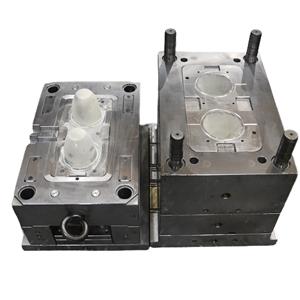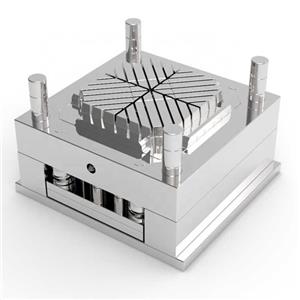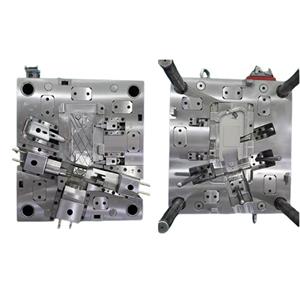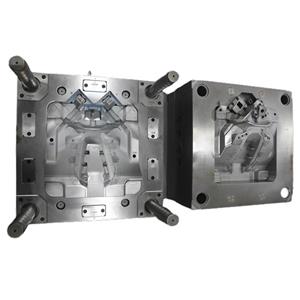Custom Medical Prototype Injection Mold Manufacturing
The development of new medical devices is a complex and demanding process, demanding rigorous testing and iterative refinement before products reach the market. A crucial step in this process is the creation of prototypes, and within this lies the critical role of custom medical prototype injection mold manufacturing. This intricate process allows medical device companies to produce accurate, high-quality representations of their final product, facilitating testing, design validation, and ultimately, a smoother path to regulatory approval. Understanding the nuances of custom medical prototype injection mold manufacturing is vital for anyone involved in bringing innovative medical devices to market.
Material Selection: The Foundation of Success
The choice of material for a medical prototype injection mold is paramount. The material must be biocompatible, meaning it won't cause adverse reactions when in contact with body tissues or fluids. This requires careful consideration of the intended application of the medical device. For example, a prototype for a surgical implant might necessitate a high-strength, biocompatible polymer like PEEK (Polyetheretherketone), known for its excellent resistance to wear and tear and its biocompatibility. Conversely, a prototype for a simple disposable device might use a more cost-effective, yet still biocompatible, material like polypropylene or polycarbonate.
Beyond biocompatibility, other factors influence material selection. The required mechanical properties, such as tensile strength, flexibility, and impact resistance, are crucial. The intended sterilization method also plays a significant role; some materials may degrade under certain sterilization processes like ethylene oxide or autoclaving. The manufacturer needs to carefully weigh all these factors to select the optimal material, ensuring the prototype accurately reflects the performance characteristics of the final product.
Design Considerations: Accuracy and Functionality
The design of the injection mold itself is another critical aspect. The mold's design must precisely replicate the intended geometry of the medical device prototype. This demands precise CAD (Computer-Aided Design) modeling and thorough analysis to minimize potential defects or inaccuracies. The tolerances involved are often extremely tight, requiring advanced manufacturing techniques and high-precision machining.
Furthermore, the design needs to incorporate considerations for ease of manufacturing and ejection. The mold needs to be designed to efficiently remove the prototype from the mold cavity without causing damage or distortion. This often involves the inclusion of specialized features like ejector pins and undercut mechanisms, all of which must be meticulously planned and executed.
Manufacturing Process: Precision and Quality Control
The manufacturing process itself involves sophisticated machinery and skilled technicians. High-precision Computer Numerical Control (CNC) machining is typically employed to create the mold cavities, ensuring the utmost accuracy and surface finish. The complexity of the medical device's design may dictate the use of advanced manufacturing techniques like Electrical Discharge Machining (EDM) for intricate geometries or difficult-to-machine materials.
Rigorous quality control measures are implemented throughout the manufacturing process. Regular inspections and testing ensure that the mold meets the required specifications and is free from defects. This may involve dimensional inspections, material testing, and functional testing of the mold to verify its ability to produce high-quality prototypes consistently.
Iteration and Refinement: A Collaborative Process
Custom medical prototype injection mold manufacturing is rarely a one-off process. Initial prototypes often reveal design flaws or areas for improvement. This necessitates an iterative approach, with revisions to the mold design and subsequent production of refined prototypes. This collaborative process involves close communication between the medical device company, the mold manufacturer, and potentially other stakeholders, such as regulatory bodies.
The ability to quickly and efficiently iterate on designs is a key benefit of using injection molding for prototypes. Compared to other prototyping methods, injection molding allows for relatively fast turnaround times, enabling rapid design iterations and accelerating the overall development process. This agile approach minimizes development costs and time-to-market.
Regulatory Compliance and Documentation: Meeting the Standards
Medical device development is heavily regulated, and the manufacturing of prototypes is no exception. The entire process must adhere to relevant regulatory standards and guidelines, such as those defined by the FDA (Food and Drug Administration) or equivalent international bodies. This involves meticulous documentation of the manufacturing process, material traceability, and quality control measures.
Proper documentation is essential not only for regulatory compliance but also for facilitating future production. Comprehensive records of the mold design, manufacturing process, and material specifications are crucial for transferring the design to high-volume manufacturing once the prototype is finalized and approved. This ensures a smooth transition from prototype to mass production, minimizing potential delays and complications.
In conclusion, custom medical prototype injection mold manufacturing is a specialized and critical aspect of medical device development. It requires a deep understanding of biocompatible materials, precision machining techniques, rigorous quality control, and adherence to regulatory standards. The ability to rapidly iterate and refine designs through this process significantly contributes to the successful development and market launch of innovative and life-saving medical devices.




